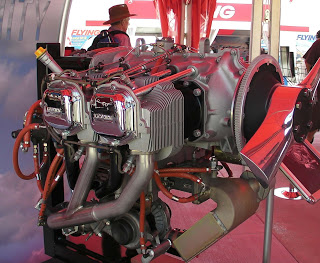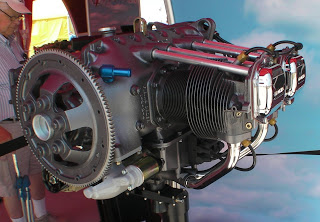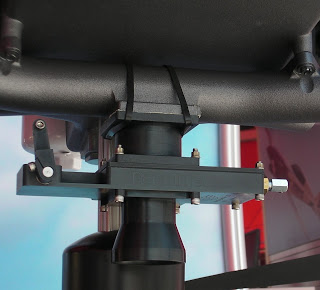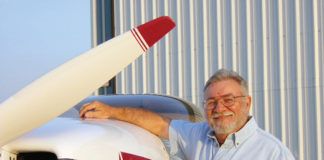 Lycoming’s 10 a.m. press conference today centered on several new projects for the manufacturer. Of note for Experimental fans are two things: Fully electronic engine controls—a FADEC—that includes a knock sensor for detonation control that will be certified but launched into the Experimental market, and the Thunderbolt Signature turbonormalized version of the IO-360 engine.
Lycoming’s 10 a.m. press conference today centered on several new projects for the manufacturer. Of note for Experimental fans are two things: Fully electronic engine controls—a FADEC—that includes a knock sensor for detonation control that will be certified but launched into the Experimental market, and the Thunderbolt Signature turbonormalized version of the IO-360 engine.
The new TIO-360 is a turbonormalized, intercooled version of the parallel-valve, 180-horsepower 360 packaged to fit as closely as possible into the footprint of the non-turbo version. According to Lycoming, the TIO-360 will be approved to run on 100LL as well as “aviation grade” 91/96UL fuel.
 The electronic engine control system, dubbed iE2, uses electronic fuel injection and ignition, an integrated electronic knock sensor and a “holistic” approach to engine management, which implies individual control of each cylinder. A single-lever power control will be part of the deal.
The electronic engine control system, dubbed iE2, uses electronic fuel injection and ignition, an integrated electronic knock sensor and a “holistic” approach to engine management, which implies individual control of each cylinder. A single-lever power control will be part of the deal.
Lycoming did not provide images at the 10 a.m. press conference, but we’ll heading to the Lycoming booth shortly to grab a few shots of the new engines.
In other Lycoming news, the IO-390, a large-bore variant of the longstanding IO-360, 200-hp engine, will be cerfified this year and offered through a new program called Eschelon to develop Supplemental Type Certificate approval for installation of the 390 in certified aircraft currently carrying the angle-valve IO-360. The first candidate is a Cessna Cardinal RG; the Piper Arrow and Mooney 201 are other logical recipients of the engine.
 For Light Sport fans comes news of the IO-233, a version of the O-235 that’s been put on an aggressive diet. It features an electronic throttle-body injection system, and will be rated from 100 to 116 hp when it is certified this year. First steps are to meet the ASTM specifications for Light Sport in 2008, followed by FAA FAR Part 33 certification in 2009 if the market demands it. Lycoming has not had a dog in the LSA fight because the O-235 is considerably heavier than the Rotax 912 and the Continental O-200, the leading engines in the field. Weight for the 233 was not announced at the press conference, but we’ll hound a few PR people for some numbers today.
For Light Sport fans comes news of the IO-233, a version of the O-235 that’s been put on an aggressive diet. It features an electronic throttle-body injection system, and will be rated from 100 to 116 hp when it is certified this year. First steps are to meet the ASTM specifications for Light Sport in 2008, followed by FAA FAR Part 33 certification in 2009 if the market demands it. Lycoming has not had a dog in the LSA fight because the O-235 is considerably heavier than the Rotax 912 and the Continental O-200, the leading engines in the field. Weight for the 233 was not announced at the press conference, but we’ll hound a few PR people for some numbers today.




